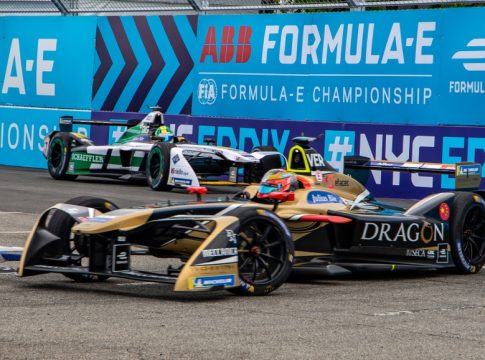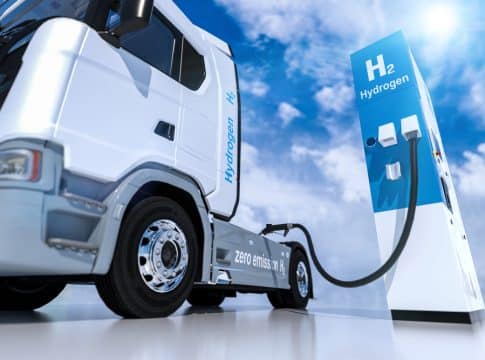The Race to Net Zero: Formula E Champ di Grassi Buys Carbon Offsets from Rubicon Carbon
Formula E Champion and ABT CUPRA driver Lucas di Grassi partnered with Rubicon Carbon, a leading carbon credit management firm to offset his carbon footprint. This collaboration marks di Grassi as the first Formula E driver to invest in carbon credits to tackle his emissions.
Di Grassi Shifts Gears to Carbon Offsets
The rapid growth of motorsports has raised environmental concerns, such as high carbon emissions. Initially limited, the industry’s sustainable practices now focus on reducing emissions, conserving energy, and using renewable resources to address climate change and promote greener racing.
RELATED NEWS: Beyond Touchdowns and Trophies: Unveiling the Carbon Footprint of Superbowl LVIII
Formula E shows how a complex, global motorsport industry should race toward achieving net zero emissions. The organization’s champ di Grassi took the first ride to sustainable racing.
Lucas di Grassi, known for his activism in mobility technology, has become a leading figure in advocating for environmental responsibility within the racing industry. He has publicly distanced himself from industries that do not prioritize sustainability. He’s the first driver to offset all his CO2 emissions from traveling globally starting with his first Formula E race in China.
Di Grassi has created a Rubicon Carbon Tonne (RCT) portfolio, a diversified and actively managed collection of carbon credits. This portfolio includes various carbon removal, nature-based avoidance, and industrial avoidance projects. The RCTs are designed to reduce risk and provide price certainty for buyers, enhancing their options for carbon offsetting.
Remarking on his collaboration with Rubicon, di Grassi said:
“In line with the values and objectives of Formula E, I drive an electric car and have adapted my lifestyle. But still, credible carbon avoidance and removal is the only way to do the sport we love and be responsible for our environment at the same time. I would be delighted if many other athletes, not only in Formula E, would consider the same path.”
Zero-Emission Race: Formula E’s Sustainability Revolution
Their collaboration illustrates how sports partnerships can drive positive environmental change and raise awareness about sustainability. Tom Montag, CEO of Rubicon Carbon, expressed his enthusiasm for the partnership, stating:
“We are excited to support Lucas and Formula E, who share our values in building a low-carbon future.”
Partnering with personalities like di Grassi is part of Rubicon’s broader strategy to invest in carbon projects worldwide. Recent initiatives include a large-scale ecosystem restoration project in Panama in collaboration with Ponterra, Microsoft, and Carbon Streaming. It’s a 250,000-acre restoration project in South Africa led by Imperative, and a partnership with YvY Capital to scale up carbon investments in Brazil.
Rubicon Carbon’s commitment to sustainability and innovation is reflected in its efforts to create impactful environmental solutions. By partnering with influential figures like Lucas di Grassi, Rubicon aims to inspire broader adoption of carbon offsetting practices within the sports industry and beyond.
Leading the Charge in Net Zero Carbon Racing
With seven days to go before the 2024 Hankook London E-Prix starts, this milestone highlights, once again, the environmental commitment of Formula E.
Motorsport’s carbon footprint primarily comes from transporting teams and vehicles globally and the emissions from fans traveling to races. Formula E tackles this by logically scheduling races worldwide, reducing unnecessary travel.
In the 2022-23 season, Formula E implemented the ABB Ability OPTIMAX system to monitor race-specific energy usage, enhancing efficiency. Despite these efforts, freight still represents ¾ of the sport’s carbon footprint.
The championship offsets between 35,000 and 40,000 tons of CO2 equivalent annually, aiming to cut its carbon footprint by 45% by 2030 from a 2018 baseline. Impressively, it has already achieved a 25% reduction.
Working with partners like DHL, Formula E explores sustainable aviation fuels and integrates sustainability across its supply chain. Initiatives include recycling tires and using recycled materials for vehicle chassis. Ultimately, the sports organization’s mission is to showcase how motor racing can thrive without emissions.
Formula E stands as the first sport with a certified net zero carbon footprint since its inception. The organization manages its carbon footprint through a 3-step process as : Measure, Reduce, and Offset.
Measure
Formula E meticulously measures its carbon emissions across the entire championship. Since its inaugural season, the organization has partnered with carbon footprint experts to conduct a Lifecycle Assessment model. This model evaluates all race operations and Formula E’s headquarters, allowing for annual monitoring and calculation of greenhouse gas emissions.
Source: Formula E website
The motor racing organization’s emissions are categorized into:
Scope 1: Direct emissions (1.3%)
Scope 2: Indirect emissions from energy use (0.7%)
Scope 3: Other indirect emissions, including travel, freight, and car production (98%)
Reduce
The world’s first all-electric FIA World Championship prioritizes reducing its carbon footprint through direct actions. In 2021, the motor racing set emission reduction targets validated by the Science Based Targets initiative (SBTi). The goals include a 60% reduction in Scope 1 and Scope 2 emissions and a 27.5% reduction in Scope 3 emissions by 2030, from a 2019 baseline. These targets aim to limit temperature rise to 1.5°C.
Source: Formula E website Notes: S5 refers to 2019 baseline, while S6-S9 refer to yearly emissions reduction until 2023.
Key emissions reduction initiatives include collaborating with logistics providers to use biofuels for road and sea freight, addressing the largest source of emissions in the championship.
Offset
To address unavoidable emissions, Formula E invests in renewable energy projects in race markets. In Season 6, these investments offset all emissions since the sport’s inception, making them the first motorsport to achieve net zero carbon status.
Formula E offset an estimated 33,800 tCO2e for Season 8 by purchasing and retiring 33,800 Certified Emission Reductions from two projects in Mexico.
In Season 9, the electric motorsport advanced its commitment by aligning with PAS 2060, the international specification for demonstrating carbon neutrality, becoming the first global sports organization to do so.
Formula E’s pioneering efforts in measuring, reducing, and offsetting carbon emissions exemplify how even high-impact sports can lead to sustainability. By achieving and maintaining net zero carbon status, Formula E sets a benchmark for other industries to follow in the quest for a greener future.
READ MORE: The Race to Sustainability: Formula 1’s Carbon Footprint and Net Zero Pledge
The post The Race to Net Zero: Formula E Champ di Grassi Buys Carbon Offsets from Rubicon Carbon appeared first on Carbon Credits.



